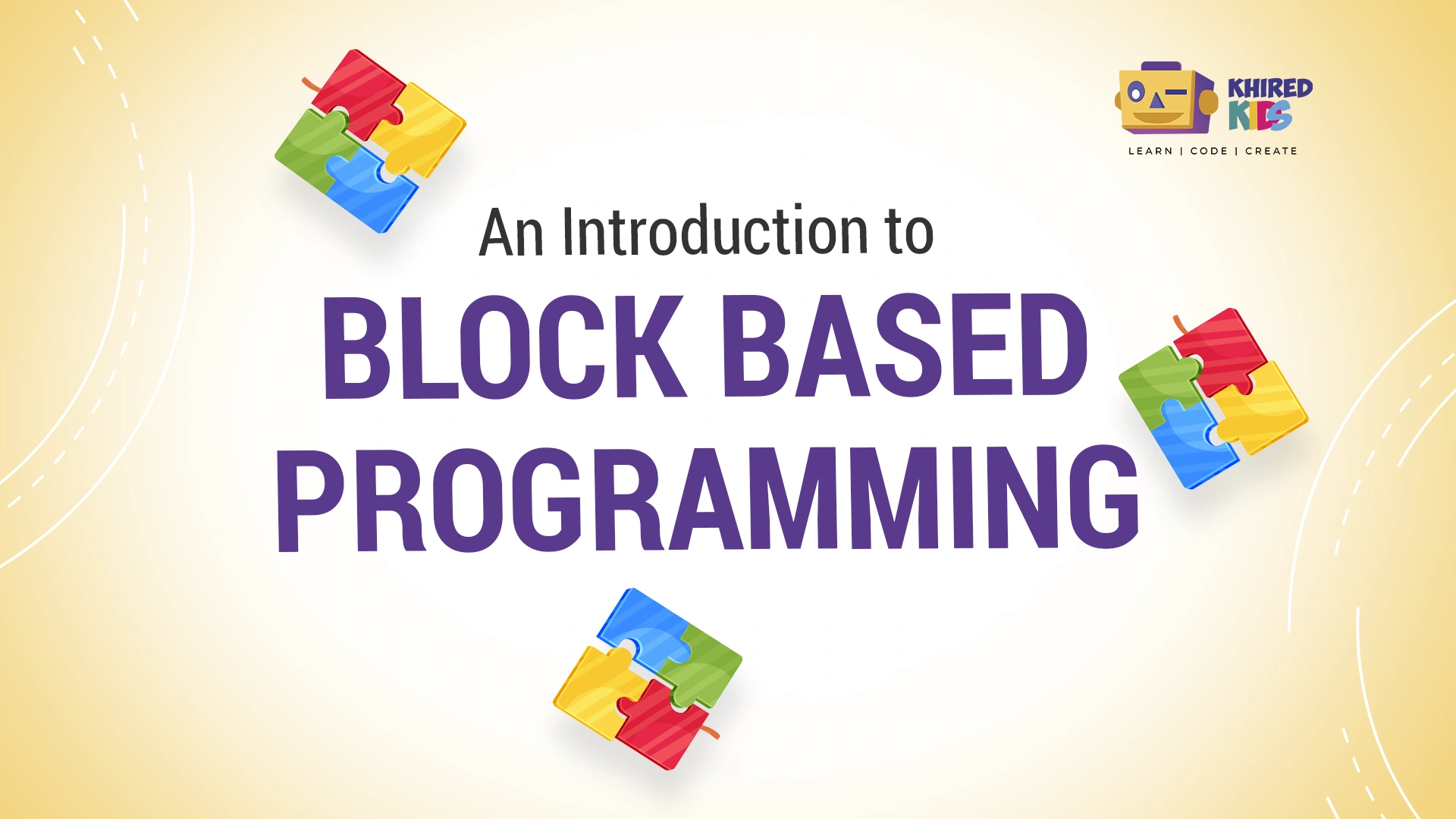Block-based programming has emerged as a popular coding language to help teach the basics of coding to beginners.
It has proved to be an excellent approach to simplifying text-based coding through its visual interface. It has also proved itself to be a fun and easy language to learn for kids, helping ignite interest in coding for kids.
This blog is here to guide you what block-based programming is, what benefits it has and some key platforms.
What is Block-Based Programming?
Let’s first understand what block-based programming is. It is a visual method of coding where programmers use blocks that represent code commands and structures.
The blocks connect like puzzle pieces and each of these blocks will contain a specific command or instruction. This is quite helpful as it replaces the complexity of text-based coding which allows beginners to focus on the logic rather than getting overwhelmed by coding.
Block-based programming has slowly started to make its way in institutions as well because it is a helpful skill to teach to kids and easy enough to add to the curriculum.
Benefits of Block-Based Programming
This blog is here to guide you about what block-based programming is, what benefits it has, and some key platforms.
1. Simplified Learning Curve
The ease of usage of block-based programming is one of its key benefits. Syntax mistakes are removed via the drag-and-drop interface, which helps to overcome any common obstacle for those new to it.
2. Enhanced Engagement
Learning to code is intriguing and enjoyable because block-based programming is visual and interactive. Vibrantly colored building pieces and immediate feedback combine to make learning fun. For younger pupils, who might find traditional text-based coding difficult, this is very helpful.
3. Immediate Feedback
With the real-time feedback offered by many block-based programming environments, students may see the results of their code right away. This instantaneous reinforcement promotes experimentation and discovery while solidifying comprehension.
4. Focus on Logic and Structure
Block-based programming assists students in concentrating on the logic and structure of their programs by abstracting the syntax. It is essential to have this fundamental knowledge to go on to more complex coding languages and ideas later.
5. Collaboration and Sharing
Many web-based platforms for block-based programming make it simple for students to share and work together on projects. This can improve the educational experience by fostering a sense of community and encouraging peer learning.
Key Block-Based Programming Platforms
1. Scratch
Scratch is one of the well-known platforms for block-based programming developed by MIT university. It is designed for children and offers a user-friendly interface to help them learn the basics of coding where they can create interactive stories and games.
It has a wide variety of resources, videos, and lectures available online through which kids can learn from easily.
2. Blockly
Blockly has been developed by Google. It was created to teach beginners programming. It is a visual coding language that allows users to create codes by stacking blocks together making it easy to write code for beginners.
The only drawback to Blockly is that it has far fewer resources compared to Scratch.
3. Code.org
Code.org is a platform that has various courses that teach block-based programming to students. They have guides and engaging tutorials that help them learn about coding thoroughly.
Code.org uses blockly to teach kids basics of coding then transitions them to text-based programming in the future.
4. Tynker
Tynker is an educational programming platform like code.org which teaches children coding skills. It includes games, web design, animation and robotics.
Moreover, it uses a block-based approach to beginners and offers courses that transition into text-based languages like JavaScript and Python. Tynker’s learning experience is gamification which is quite appealing to kids.
Conclusion
Block-based programming is the gateway to advanced coding. It is a great place for beginners to start before they transition to text-based coding as it teaches them important coding concepts.
Moreover, it helps instill computational thinking within students, these include problem solving and logic skills. These are some of the skills that can be carried forward in the future in computer science fields.
This blog discussed what block-based programming is, the benefits and some key platforms you can use to study. We wanted to help you out with the basics, so you embark on your own coding journey to learn the basics of coding through block-based programming and unlock a world of possibilities and pave the way for future success in technology.


0 Comments